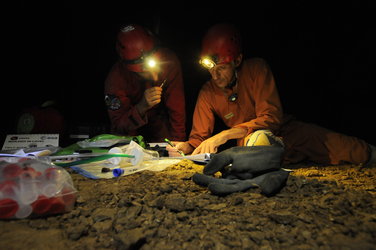Accept all cookies Accept only essential cookies See our Cookie Notice

About ESA
The European Space Agency (ESA) is Europe’s gateway to space. Its mission is to shape the development of Europe’s space capability and ensure that investment in space continues to deliver benefits to the citizens of Europe and the world.
Highlights
ESA - United space in Europe
This is ESA ESA facts Member States & Cooperating States Funding Director General Top management For Member State Delegations European vision European Space Policy ESA & EU Space Councils Responsibility & Sustainability Annual Report Calendar of meetings Corporate newsEstablishments & sites
ESA Headquarters ESA ESTEC ESA ESOC ESA ESRIN ESA EAC ESA ESAC Europe's Spaceport ESA ESEC ESA ECSAT Brussels Office Washington OfficeWorking with ESA
Business with ESA ESA Commercialisation Gateway Law at ESA Careers Cyber resilience at ESA IT at ESA Newsroom Partnerships Merchandising Licence Education Open Space Innovation Platform Integrity and Reporting Administrative Tribunal Health and SafetyMore about ESA
History ESA Historical Archives Exhibitions Publications Art & Culture ESA Merchandise Kids Diversity ESA Brand Centre ESA ChampionsLatest
Space in Member States
Find out more about space activities in our 23 Member States, and understand how ESA works together with their national agencies, institutions and organisations.
Science & Exploration
Exploring our Solar System and unlocking the secrets of the Universe
Go to topicAstronauts
Missions
Juice Euclid Webb Solar Orbiter BepiColombo Gaia ExoMars Cheops Exoplanet missions More missionsActivities
International Space Station Orion service module Gateway Concordia Caves & Pangaea BenefitsLatest
Space Safety
Protecting life and infrastructure on Earth and in orbit
Go to topicAsteroids
Asteroids and Planetary Defence Asteroid danger explained Flyeye telescope: asteroid detection Hera mission: asteroid deflection Near-Earth Object Coordination CentreSpace junk
About space debris Space debris by the numbers Space Environment Report In space refuelling, refurbishing and removingSafety from space
Clean Space ecodesign Zero Debris Technologies Space for Earth Supporting Sustainable DevelopmentLatest
Applications
Using space to benefit citizens and meet future challenges on Earth
Go to topicObserving the Earth
Observing the Earth Future EO Copernicus Meteorology Space for our climate Satellite missionsCommercialisation
ESA Commercialisation Gateway Open Space Innovation Platform Business Incubation ESA Space SolutionsLatest
Enabling & Support
Making space accessible and developing the technologies for the future
Go to topicBuilding missions
Space Engineering and Technology Test centre Laboratories Concurrent Design Facility Preparing for the future Shaping the Future Discovery and Preparation Advanced Concepts TeamSpace transportation
Space Transportation Ariane Vega Space Rider Future space transportation Boost! Europe's Spaceport Launches from Europe's Spaceport from 2012Latest

Ready for descent
Thank you for liking
You have already liked this page, you can only like it once!
ESA trainers and caving specialists are pictured here underground in Sardinia, Italy, to setting the scene for space-like astronaut training next month. The trainers descended into the caves on a ‘dry run’ without the astronauts, to test their planned tasks and operations, and are now finalising preparation of equipment and facilities after ESA declared ‘GO’ for CAVES 2014 last week.
CAVES 2014 will take place between 7–20 September in Sardinia – details on participants in this year’s event can be found here.
CAVES – short for Cooperative Adventure for Valuing and Exercising human behaviour and performance Skills – offers astronauts, trainers and planners a chance to test space-like procedures while exploring uncharted caverns in new environments.
This year, the CAVES team are stepping up the space realism and exploration while testing more technology and procedures.
Clambering down to basecamp hundreds of metres below the surface using safety tethers is similar to conducting a spacewalk, and this year the procedures have been updated to include astronaut terminology.
In space, an object can quickly float away and be lost forever. While caving, dropped equipment can also be lost forever down crevices or in holes.
When passing equipment, cavers and astronauts must make sure the recipient is grasping the item before the first person lets go: ‘make before break’ in astronaut language.
No opportunity is missed to make the week-long stay underground resemble a space mission. The trainees will follow timeline and procedures, including handling equipment and communication protocols just as on the International Space Station.
-
CREDIT
ESA/L.Bessone -
LICENCE
ESA Standard Licence

Caves dry run

Preparing science CAVES 2014

Preparing for CAVES 2013

CAVES 2011 team and trainers















 Germany
Germany
 Austria
Austria
 Belgium
Belgium
 Denmark
Denmark
 Spain
Spain
 Estonia
Estonia
 Finland
Finland
 France
France
 Greece
Greece
 Hungary
Hungary
 Ireland
Ireland
 Italy
Italy
 Luxembourg
Luxembourg
 Norway
Norway
 The Netherlands
The Netherlands
 Poland
Poland
 Portugal
Portugal
 Czechia
Czechia
 Romania
Romania
 United Kingdom
United Kingdom
 Slovenia
Slovenia
 Sweden
Sweden
 Switzerland
Switzerland
























